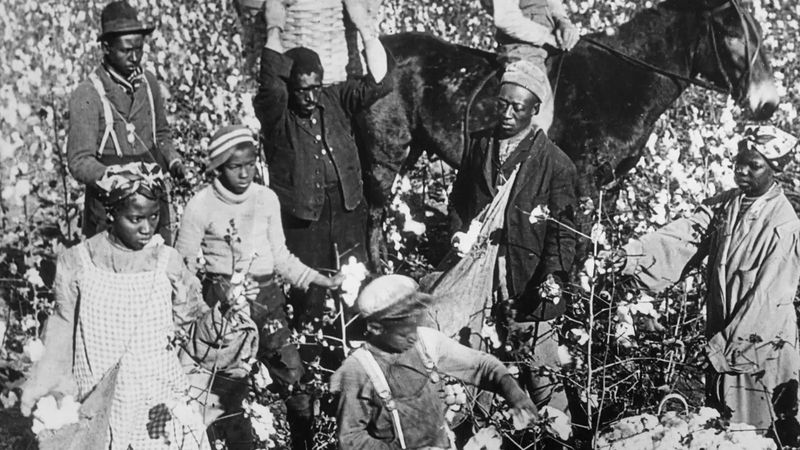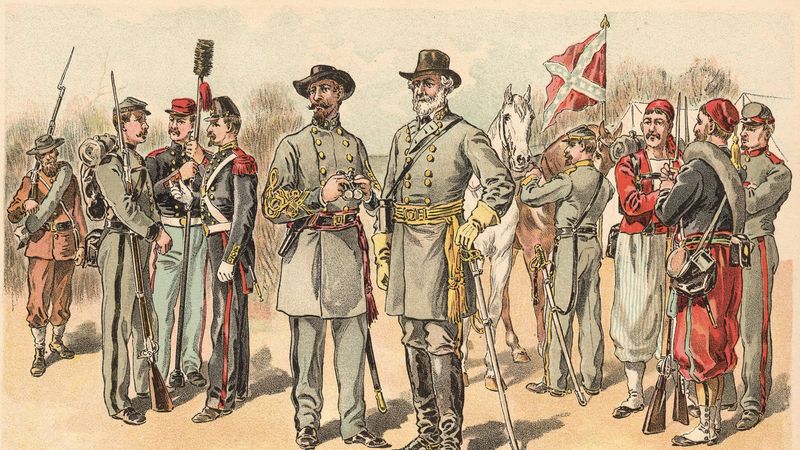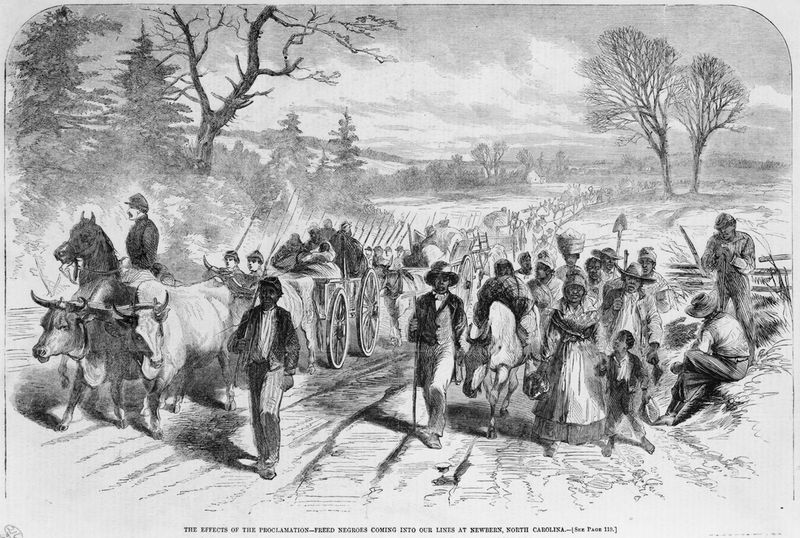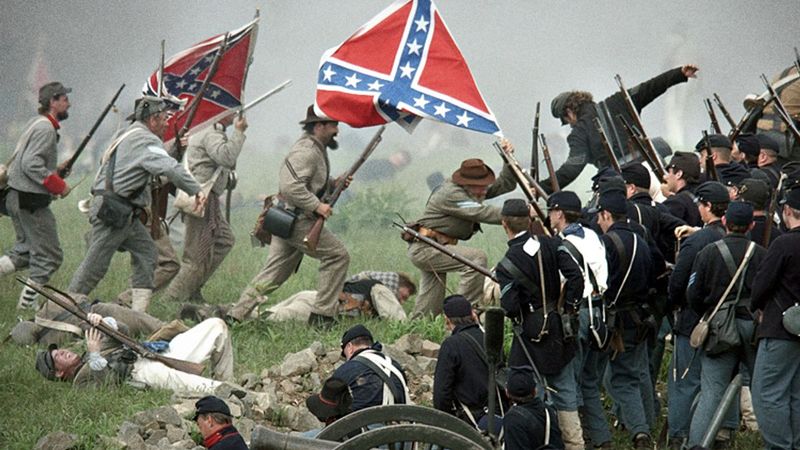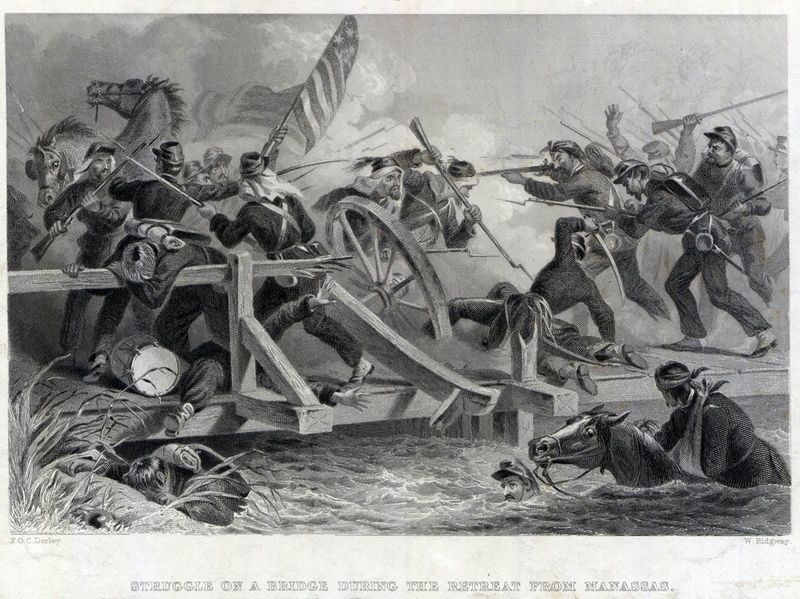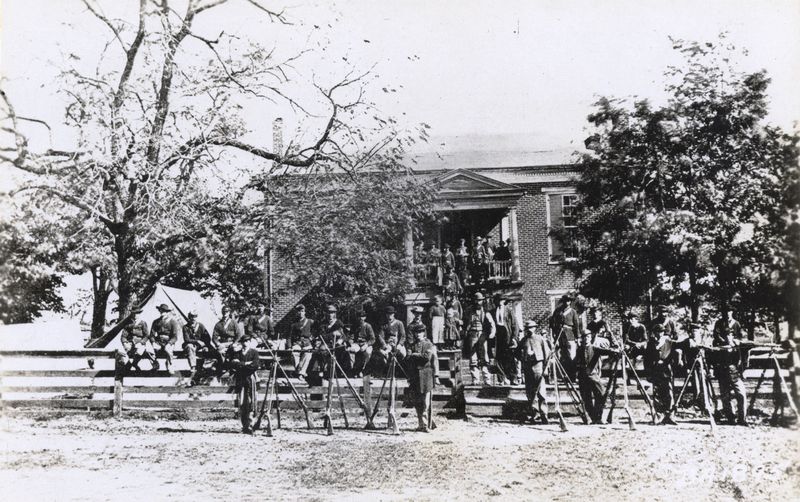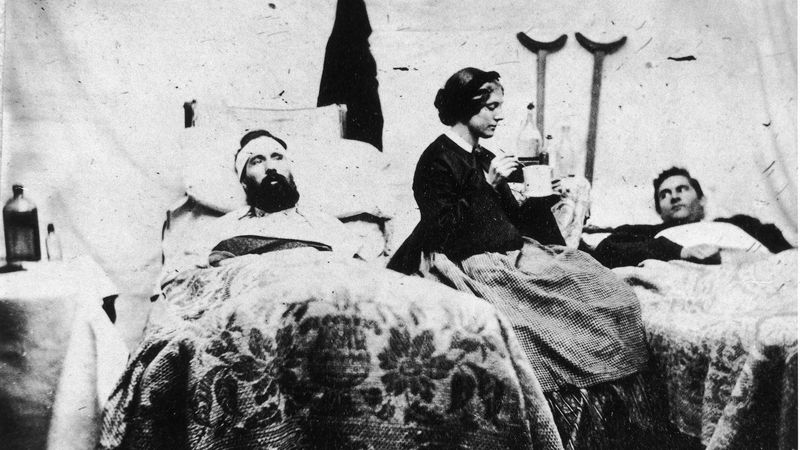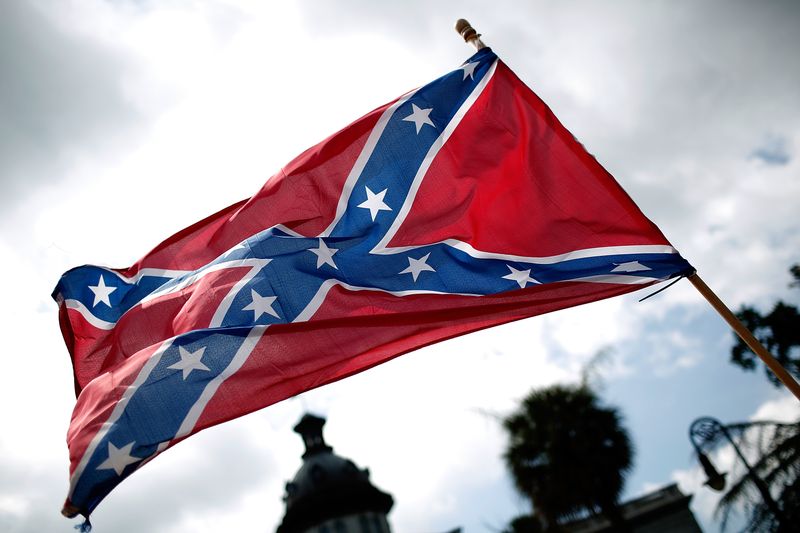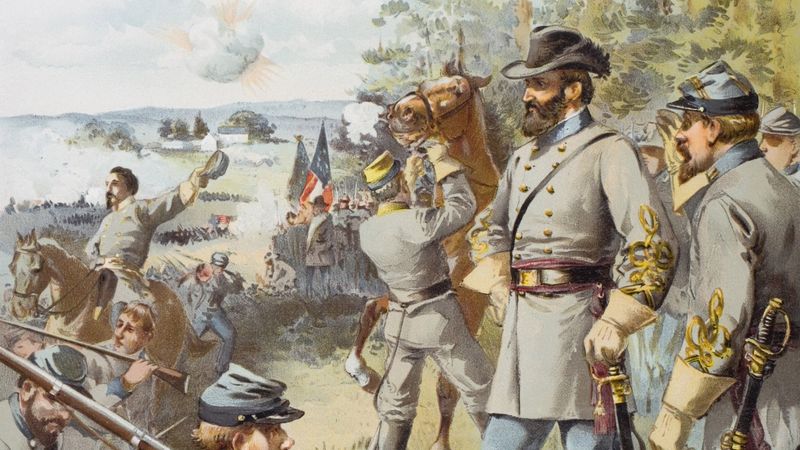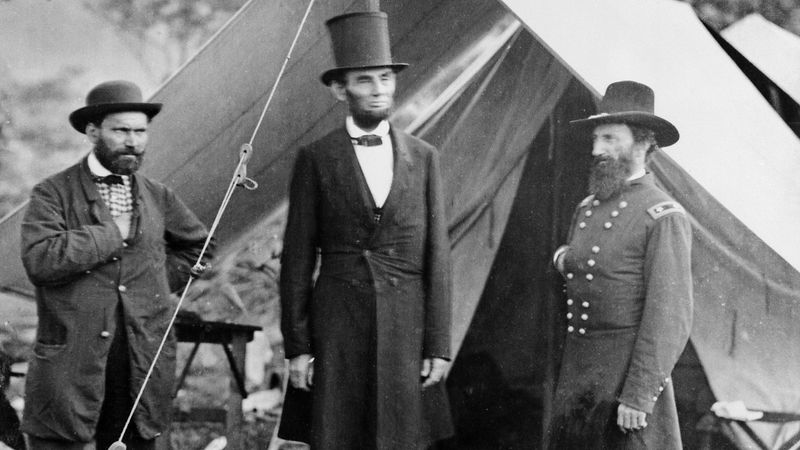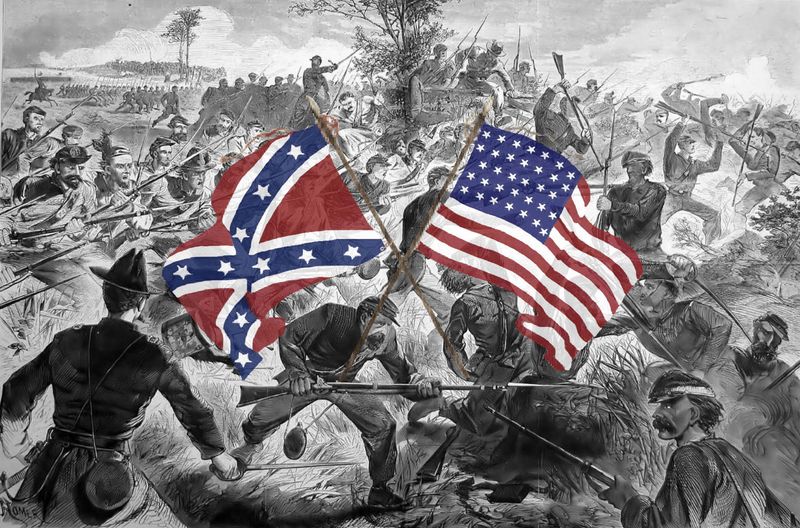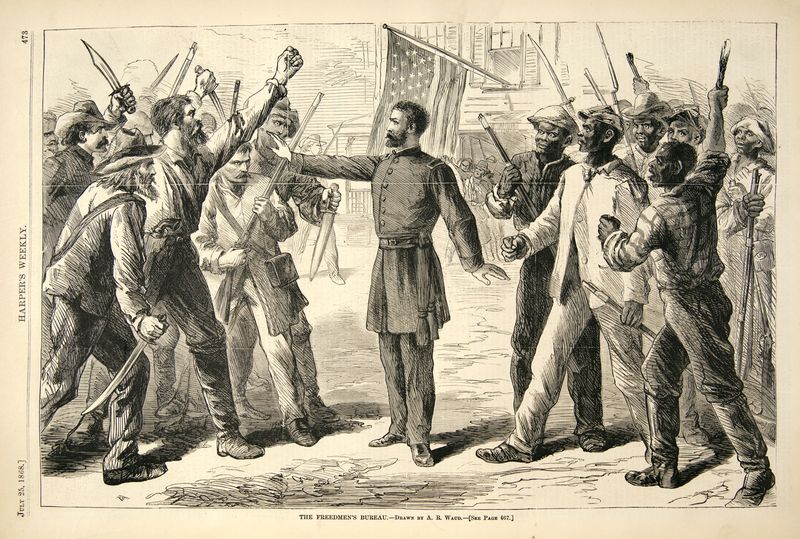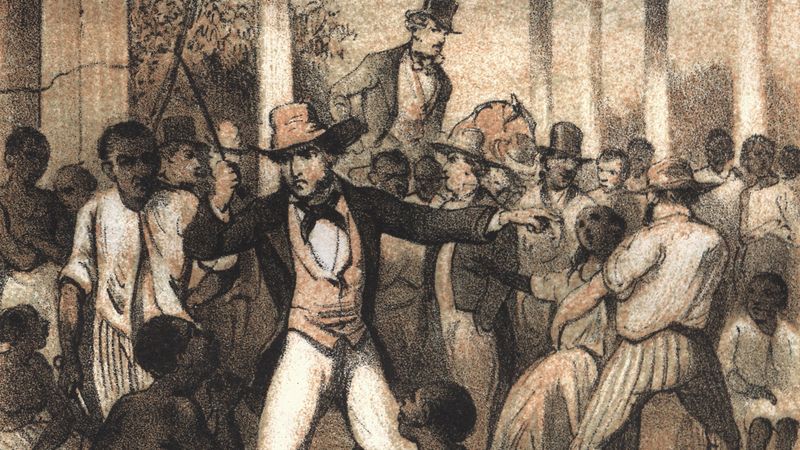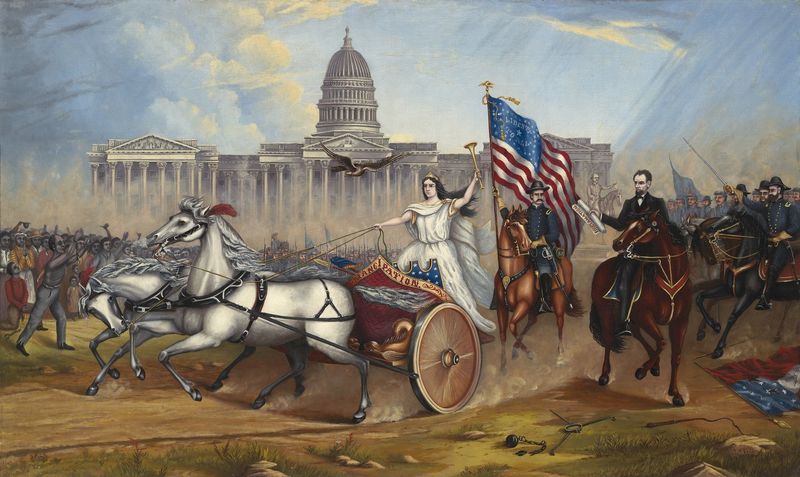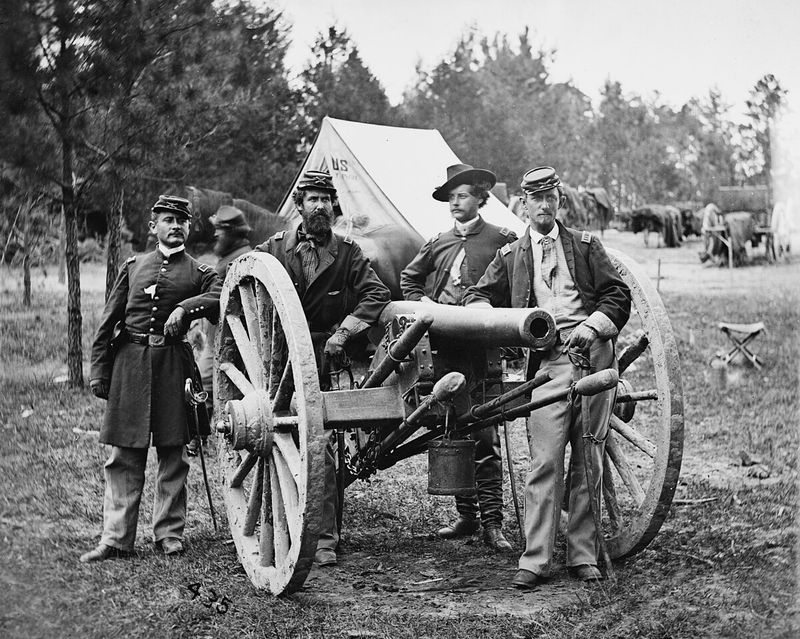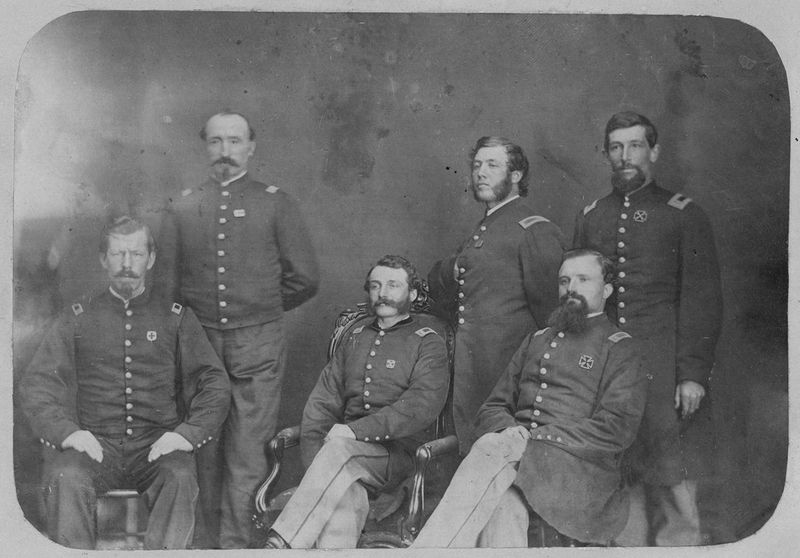The American Civil War, a pivotal event in U.S. history, is often misunderstood due to numerous myths that have persisted over time. In this blog post, we aim to debunk 17 of the most common myths surrounding this complex and rich historical period.
By presenting factual information and shedding light on these misconceptions, we hope to provide a clearer understanding of the Civil War’s true nature and its lasting impact.
1. Myth 1: The Civil War Was Only About Slavery
The idea that the Civil War was solely about slavery is a prevalent misconception. While slavery was indeed a significant factor, other issues like state rights and economic disparities were also at play.
The Southern economy relied heavily on agriculture and slavery, whereas the Northern states were more industrialized. This economic difference created tension between regions.
It’s essential to understand that while slavery was a core reason, the war was a multifaceted conflict. Recognizing these complexities allows for a more nuanced view of history, encouraging deeper reflection on the causes and effects of the Civil War.
2. Myth 2: All Southerners Supported the Confederacy
Contrary to popular belief, not all Southerners were in favor of the Confederacy. Many opposed secession and had strong Unionist sentiments. These individuals included mountain communities in states like Tennessee and North Carolina.
Additionally, some Southerners actively fought for the Union. This myth oversimplifies the diverse perspectives within the Southern states. Understanding these internal divisions is crucial for grasping the full picture of the Civil War.
Acknowledging this diversity highlights the complexity of social and political beliefs in the South during this period.
3. Myth 3: The Emancipation Proclamation Freed All Slaves
The Emancipation Proclamation, issued by Abraham Lincoln in 1863, is often mistakenly believed to have freed all slaves in America. In reality, it only applied to Confederate states still in rebellion and did not affect slavery in border states loyal to the Union.
The Proclamation was a crucial step towards abolition, but it was not comprehensive. It shifted the war’s focus to a moral cause, galvanizing support for the Union.
The actual abolition of slavery occurred with the Thirteenth Amendment in 1865. This distinction is vital to understanding the legal and historical nuances of emancipation.
4. Myth 4: The Civil War Was Fought Mainly in the South
It is a common misconception that the Civil War was primarily fought in the South. Although many key battles occurred there, significant conflicts also took place in Northern and border states.
Notable battles such as Gettysburg, Antietam, and others occurred outside the traditional Southern theater. This myth overlooks the widespread nature of the war and its impact on various regions.
Understanding the geographical scope of the conflict is crucial for appreciating the war’s extensive reach. Recognizing battles fought across the country broadens the perspective on the Civil War’s comprehensive nature.
5. Myth 5: The North Had Overwhelming Military Superiority
Many believe the North’s victory was due to overwhelming military superiority, but this view simplifies a complex reality. While the North had advantages in numbers and industrial resources, the South had strategic and tactical strengths.
Southern generals like Robert E. Lee were renowned for their leadership. Moreover, the South’s familiarity with their own terrain offered a defensive edge. The war’s outcome was influenced by numerous factors, including determination, leadership, and logistics.
Understanding these dynamics reveals that victory was not assured for the North, and both sides had unique strengths and challenges.
6. Myth 6: The Civil War Ended at Appomattox Court House
The surrender of Lee to Grant at Appomattox Court House is often seen as the definitive end of the Civil War. However, this event marked only the beginning of the end.
Other Confederate armies continued fighting, and some regions experienced conflict for months afterward. It wasn’t until later that all hostilities ceased, and reconstruction efforts began.
This myth simplifies the complex process of ending the war and transitioning to peace. Acknowledging the prolonged nature of the war’s conclusion helps to understand the challenges of reunification and the lingering tensions in post-war America.
7. Myth 7: Women Played No Significant Role in the Civil War
The belief that women were uninvolved in the Civil War is far from accurate. Women served as nurses, spies, and even disguised themselves as male soldiers to fight. They also managed homes and businesses, supporting the war effort from the home front.
Figures like Clara Barton and Harriet Tubman made significant contributions. Recognizing women’s roles provides a more inclusive understanding of the war.
Their participation challenged traditional gender roles, paving the way for future social change. This myth overlooks the diverse and essential contributions of women during this period.
8. Myth 8: The Confederate Flag Was the Official Flag of the Confederacy
The so-called “Confederate Flag” commonly recognized today was never the official flag of the Confederacy. Known as the battle flag, it was one of many used by Confederate forces.
The Confederacy had three official national flags during its existence. This misconception oversimplifies the complex history of Confederate symbols.
Understanding the diversity of flags helps clarify the cultural and historical context of the era. The battle flag’s modern usage and symbolism differ significantly from its original intent, necessitating a careful examination of its role in contemporary society.
9. Myth 9: The Civil War Was a Quick Conflict
People often assume the Civil War was a quick and decisive conflict, yet it lasted four grueling years from 1861 to 1865. The extended duration was due to various factors, including military tactics, geography, and political considerations.
Both sides experienced significant losses over numerous battles, contributing to the prolonged nature of the war. Recognizing the length and complexity of the conflict provides insight into the tremendous sacrifices and enduring impact.
This myth diminishes the war’s true scale and the profound challenges faced by both the Union and the Confederacy.
10. Myth 10: Abraham Lincoln’s Main Goal Was to Abolish Slavery
A common belief is that Lincoln’s primary goal was to abolish slavery, but his initial focus was preserving the Union. Abolition became a strategic and moral objective as the war progressed.
Lincoln recognized that ending slavery would weaken the Confederacy and strengthen the Union’s cause. His evolving stance reflects the complex political landscape he navigated.
Understanding Lincoln’s priorities helps clarify the multifaceted nature of leadership during the Civil War. This myth oversimplifies his intentions and the broader context in which he governed, highlighting the intricate balance between political goals and moral imperatives.
11. Myth 11: The Civil War Solved All Racial Tensions in America
The belief that the Civil War resolved America’s racial issues is a significant oversimplification. While it led to the abolition of slavery, racial tensions continued long after.
The Reconstruction era saw attempts to integrate freed slaves into society, but systemic racism persisted. The rise of Jim Crow laws and ongoing discrimination illustrated the war’s incomplete resolution of racial conflicts.
Understanding this myth highlights the ongoing struggle for equality that continued well into the 20th century and beyond. Recognizing these lasting challenges emphasizes the need for continued dialogue and efforts towards true equality.
12. Myth 12: The Civil War Was Inevitable
The notion that the Civil War was unavoidable is a common myth. While tensions between North and South were high, several attempts were made to find peaceful resolutions.
Compromises like the Missouri Compromise and the Compromise of 1850 aimed to ease sectional tensions. However, these efforts ultimately failed to address fundamental disagreements.
Understanding this myth emphasizes the complexity of historical events and the potential for alternate outcomes.
It challenges the perspective that conflict was the only solution, highlighting the importance of negotiation and diplomacy in preventing warfare.
13. Myth 13: All Northern States Were Against Slavery
The idea that all Northern states unanimously opposed slavery is incorrect. While the North generally supported abolition, there were varying opinions among its population. Some Northerners were indifferent or even hostile to the abolitionist cause.
Economic interests and racial prejudices influenced attitudes towards slavery and African Americans. This myth simplifies the diverse perspectives within the Northern states.
Understanding these differences provides a more nuanced view of the era, illustrating the complexities of public opinion and political beliefs. It underscores the need for recognizing the multifaceted nature of social and political landscapes.
14. Myth 14: The South Seceded Solely for Economic Reasons
The belief that the South seceded only for economic reasons is a simplification. Economic concerns, particularly regarding slavery, indeed played a role.
However, the decision to secede was also driven by political ideologies related to state sovereignty and self-governance. Many Southern leaders feared losing their political influence within the Union.
Recognizing this myth highlights the interplay between economic interests and political beliefs.
Understanding the multifaceted motivations behind secession offers a richer perspective on the complexities of the Civil War, challenging overly simplistic narratives and promoting a deeper historical analysis.
15. Myth 15: The Civil War Had No Impact on the World Stage
The Civil War’s influence extended beyond the United States, challenging the notion that it was merely a domestic issue. European countries closely monitored the conflict, with implications for their own political landscapes.
The war’s outcome impacted global perceptions of democracy and slavery. Countries like Britain had economic interests tied to Southern cotton, and the war affected international trade.
Recognizing this myth underscores the Civil War’s broader significance and its role in shaping international relations. Understanding its global impact provides a more comprehensive view of its historical importance.
16. Myth 16: The Union Uniforms Were All Blue
A common misconception is that all Union soldiers wore the same shade of blue uniforms. In reality, there was considerable variation in attire. Different regiments had unique uniforms reflecting local influences and availability of materials.
Supply shortages and logistical challenges led to a mix of colors and styles. Recognizing this myth offers insight into the practical difficulties faced by the Union Army.
Understanding the diversity in military attire highlights the adaptability and resourcefulness of soldiers during the war. This perspective contributes to a deeper appreciation of the complexities involved in wartime logistics.
17. Myth 17: The Civil War Was Entirely Fought by Americans
The belief that only Americans fought in the Civil War overlooks the diverse backgrounds of many soldiers. Immigrants from countries like Ireland, Germany, and others played significant roles in both Union and Confederate armies.
These individuals brought unique skills and perspectives to the conflict. Recognizing this myth emphasizes the multicultural nature of the war’s participants.
Understanding the contributions of immigrant soldiers enriches the narrative of the Civil War, highlighting the diverse identities that shaped its history. This perspective fosters a more inclusive view of the war’s legacy and its impact on American society.

